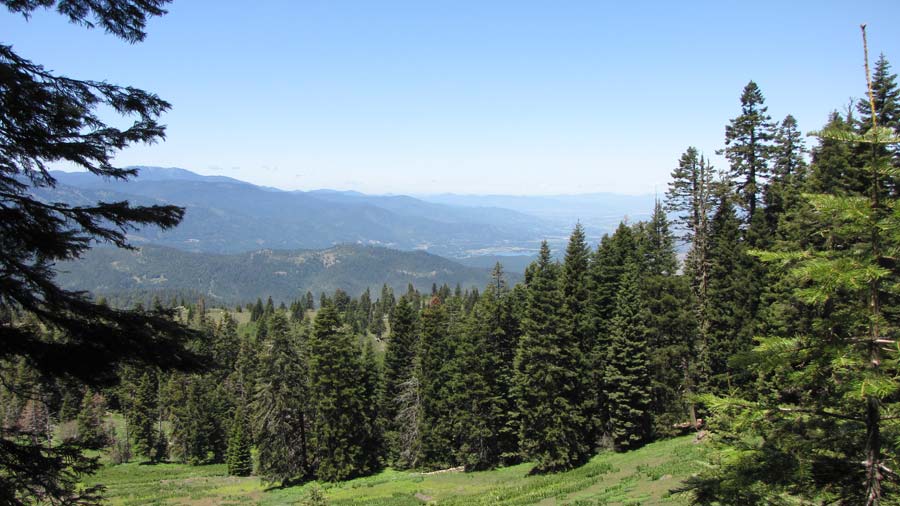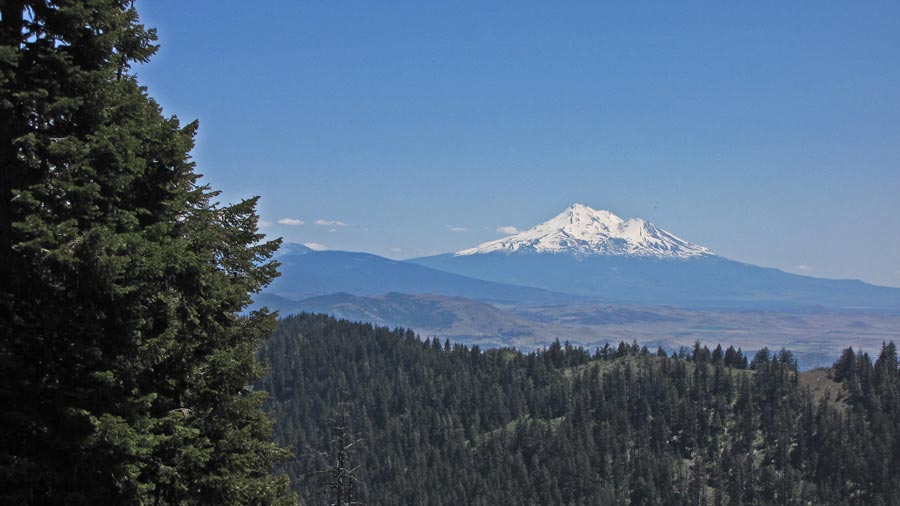Rattled
I’m now at the age where “He lived a full life!” will roll glibly from the lips of my survivors, and as my shade ascends, descends or simply hangs in the viewing room like a bad smell, it won’t really have reason to protest. Such high philosophy is noticeably absent when incidents occur on this side of the Great Divide such as the one on our hike on Friday.
We were walking a section of the Pacific Crest Trail in what is now the Soda Mountain Wilderness (thank you, Bill Clinton, for your 9th-inning National Monument designations) just southeast of Ashland that we’ve been on many times. It winds through mature second-growth forest, breaking out into slide areas that afford gorgeous views, either west towards Ashland and Siskiyou Pass, or southeast to Mt. Shasta.
Due to heavy winter snows and below-normal temperatures throughout the spring (sound familiar?), nature is somewhat behind schedule, and we’ve been seeing wildflowers on our hikes that are usually burnt out and gone by the time we get here, and things everywhere are lush and green instead of the more accustomed brown and sere, and we were literally reveling in every step.
Until this one step. The one with my right foot as I was leading us on the trail through moderate underbrush. About a quarter-mile before, we’d flushed a pair of grouse, and been startled at the loud, low vibration of their wingbeat, so we were on alert as we proceeded the rest of the way through the meadow.
So when I heard a vibration and scuffle on that fateful footfall*, I wondered for a second if I’d disturbed a grousing grouse*. Two more strides, and I heard Mrs. Perils’ maidenly exclamation…”holy fucking shit!“, I believe it was…as she leapt up onto a log well off the trail. What she had seen was a western diamondback rattlesnake, about 1 1/2″ to 2″ in diameter and at least 4 feet long, just to the right of the trail where I had stepped.
We were both pretty shaken, and as we proceeded each ensuing step was as fearful as they had been euphoric before. We froze at every rustle in the undergrowth. As I had on countless other hikes, I turned to Mrs. Perils and assured her, “It is only the wind, Gretel!”
We tried to remember what the current procedures were for dealing with a snake bite. Back in the 70s, we’d been sold snakebite kits that had razor blades and suction devices for draining venom; we knew that this treatment had been discredited, but were fuzzy about current best practices. We got to a clearing with a sumptuous view of Mt. Shasta, but our enjoyment was muted. We had a cell phone signal, so we made our one Lifeline call to a client of mine whom I knew liked to search the internet, and he pretty much confirmed what we thought we had remembered: immobilize the limb, keep the bite below your heart, no tourniquet, etc. Oh, and call 911.
Our hike was not on a loop trail, it was an out-and-back, so we would have to walk past that spot again on the way back to the car, which was 3 - 4 miles beyond it. Rescue would have been a major undertaking. (did I really say “undertaking”?). We walked on about another mile or so, hoping that, given time, our reptilian interlocutor would decide to move to a different snack bar. Ultimately, though, we had to turn around and head back. We found a couple of sticks to brandish, and walked warily. We didn’t know exactly where the encounter had taken place, but knew the general vicinity, and tapped our sticks ahead like blind people as we walked through.
Once we knew for certain we were past the spot, we built up an absurd sense of euphoria the rest of the way, as if we had a map that showed for certain we’d passed the lair of the only dragon in the forest.
Here are some photos to show why a person would undertake (there it is again) a stroll into the forest (click image to enlarge):
 |
 |
 |
More photos in a gallery here.
* I know I can write stuff like this because I’ve read some Barth recently

